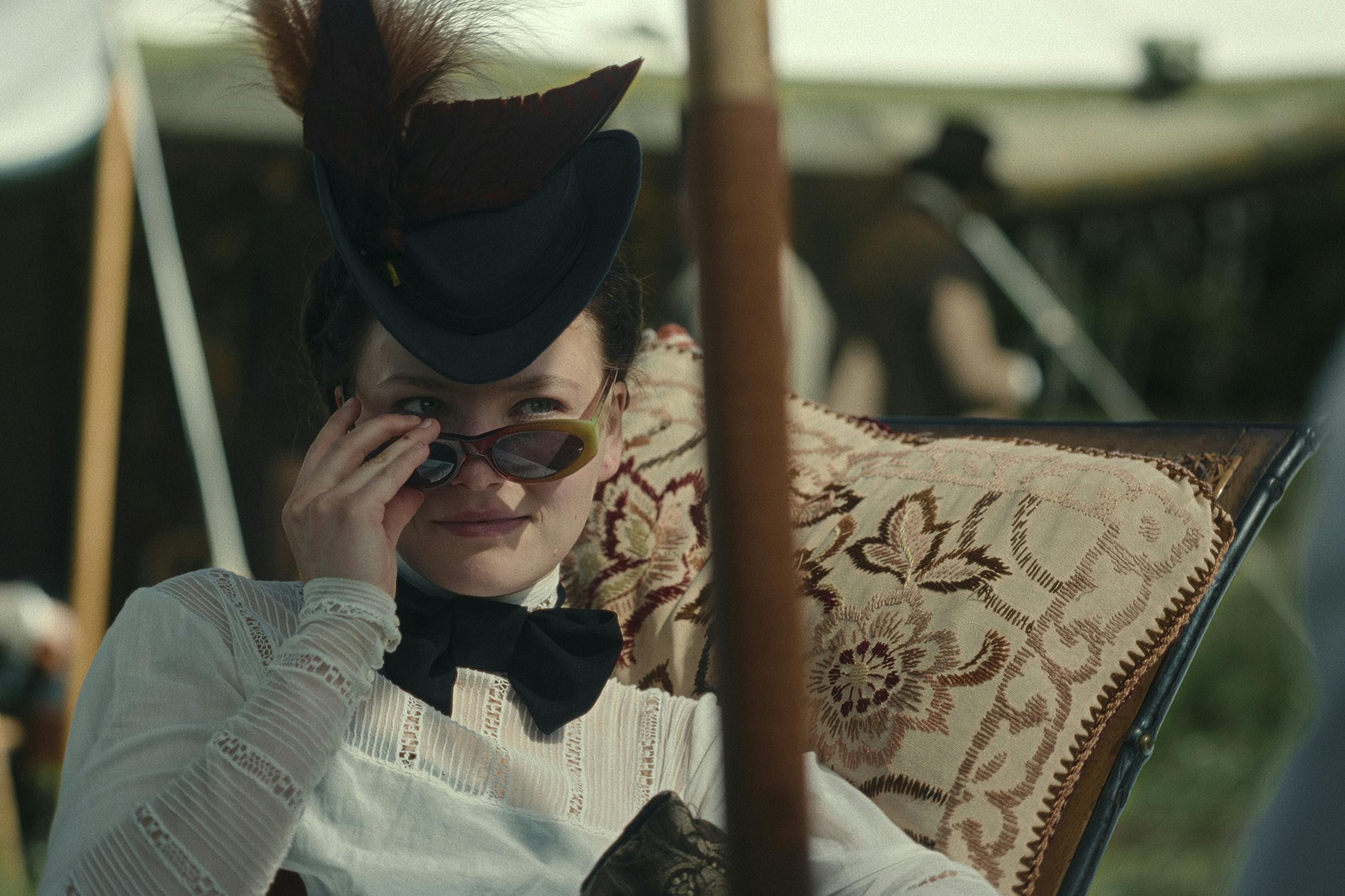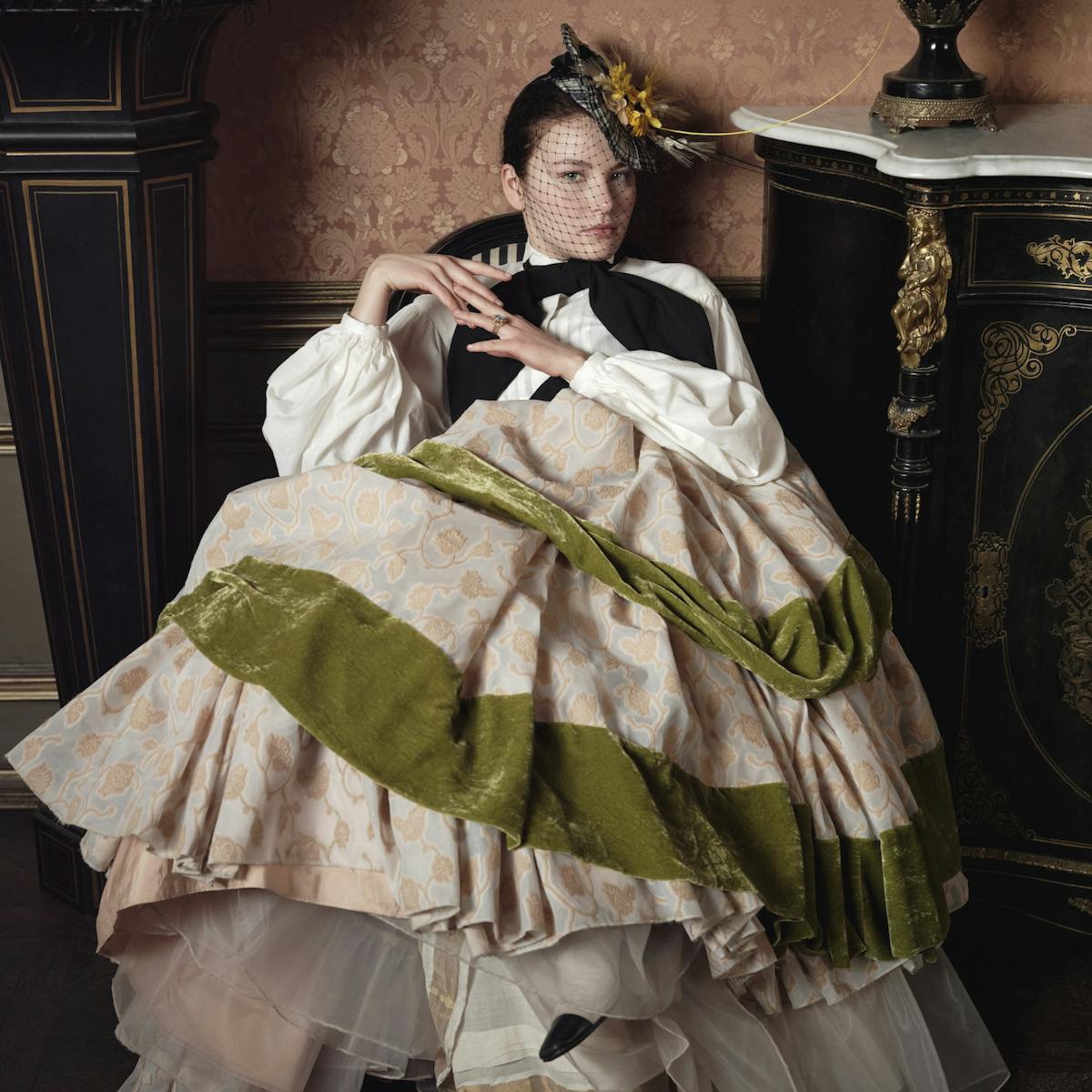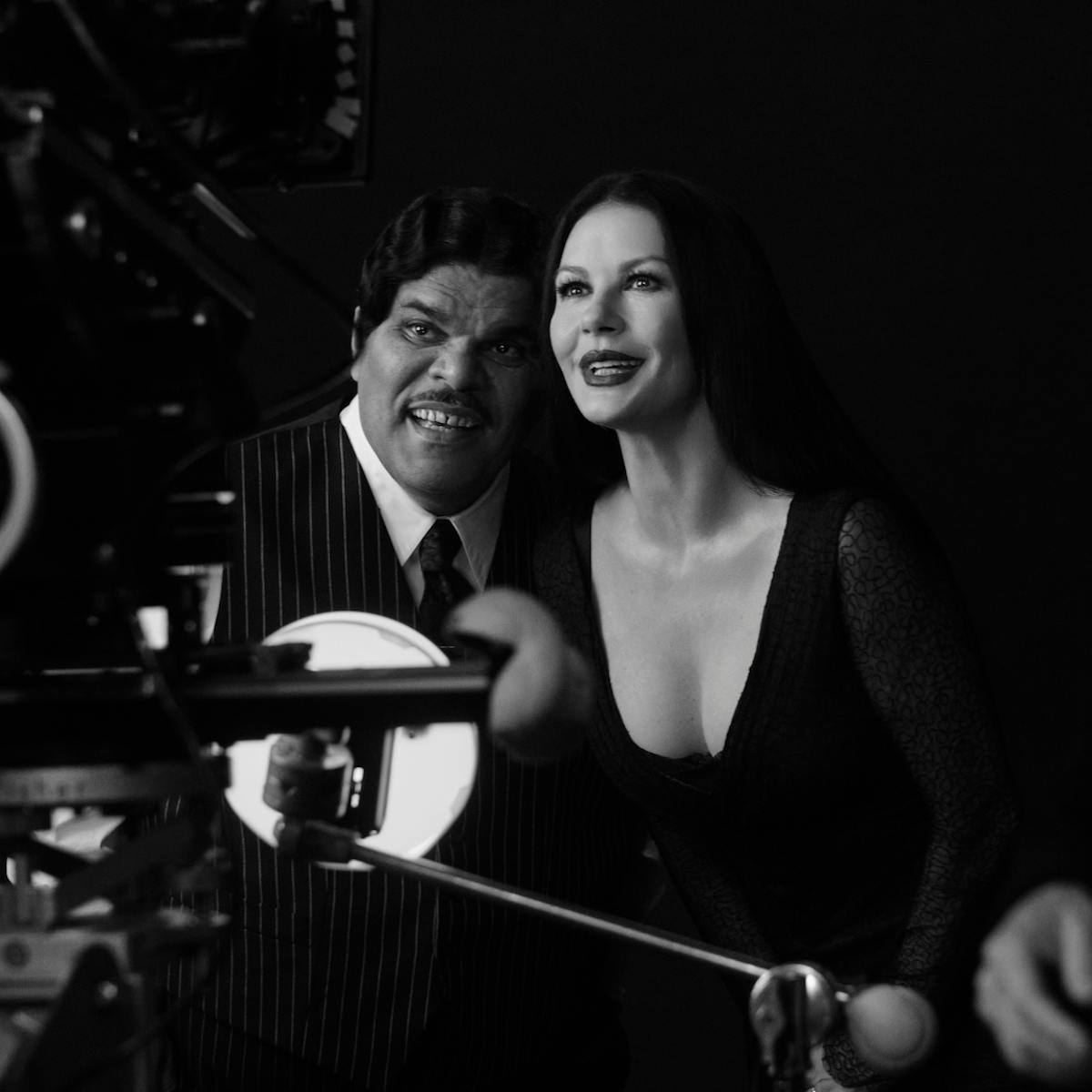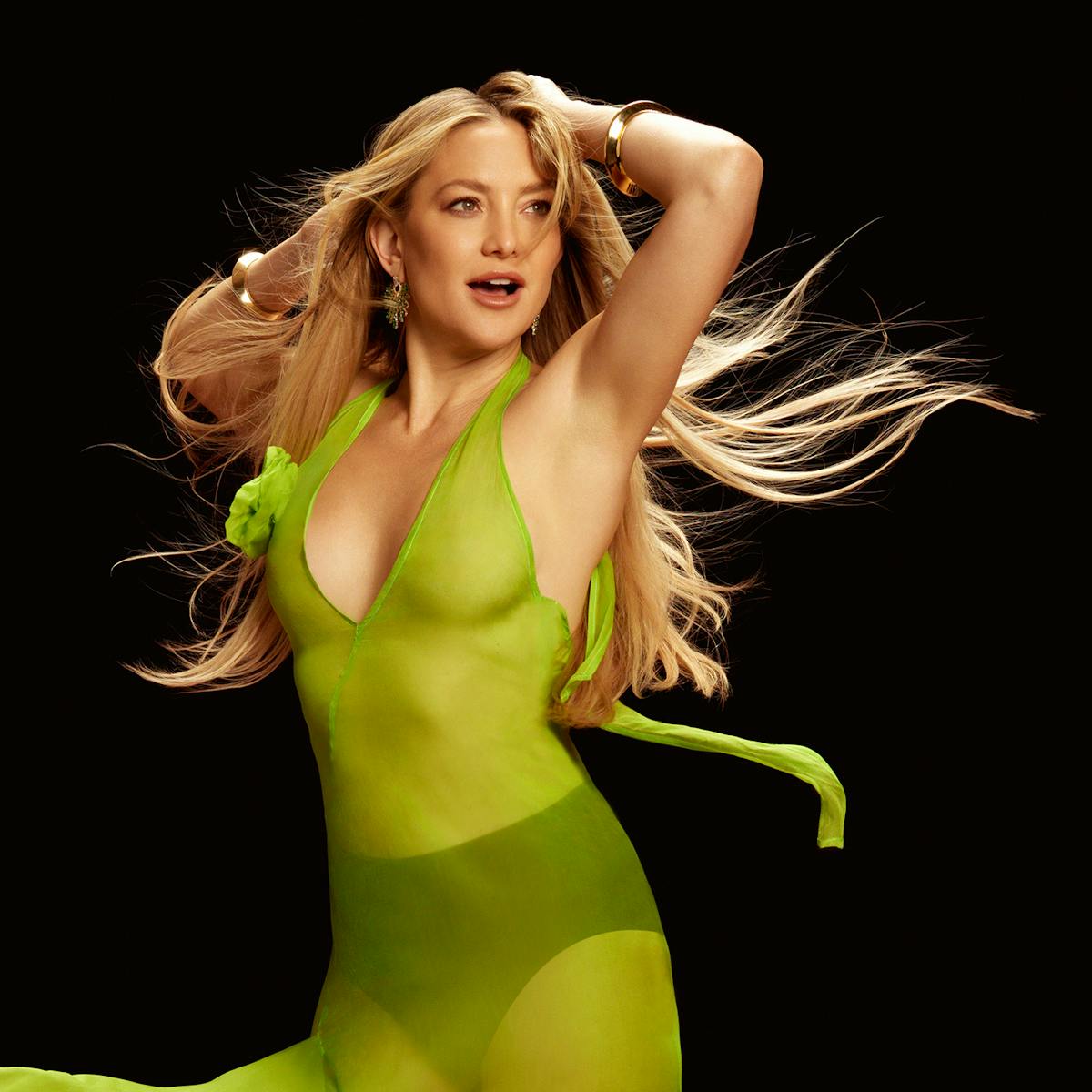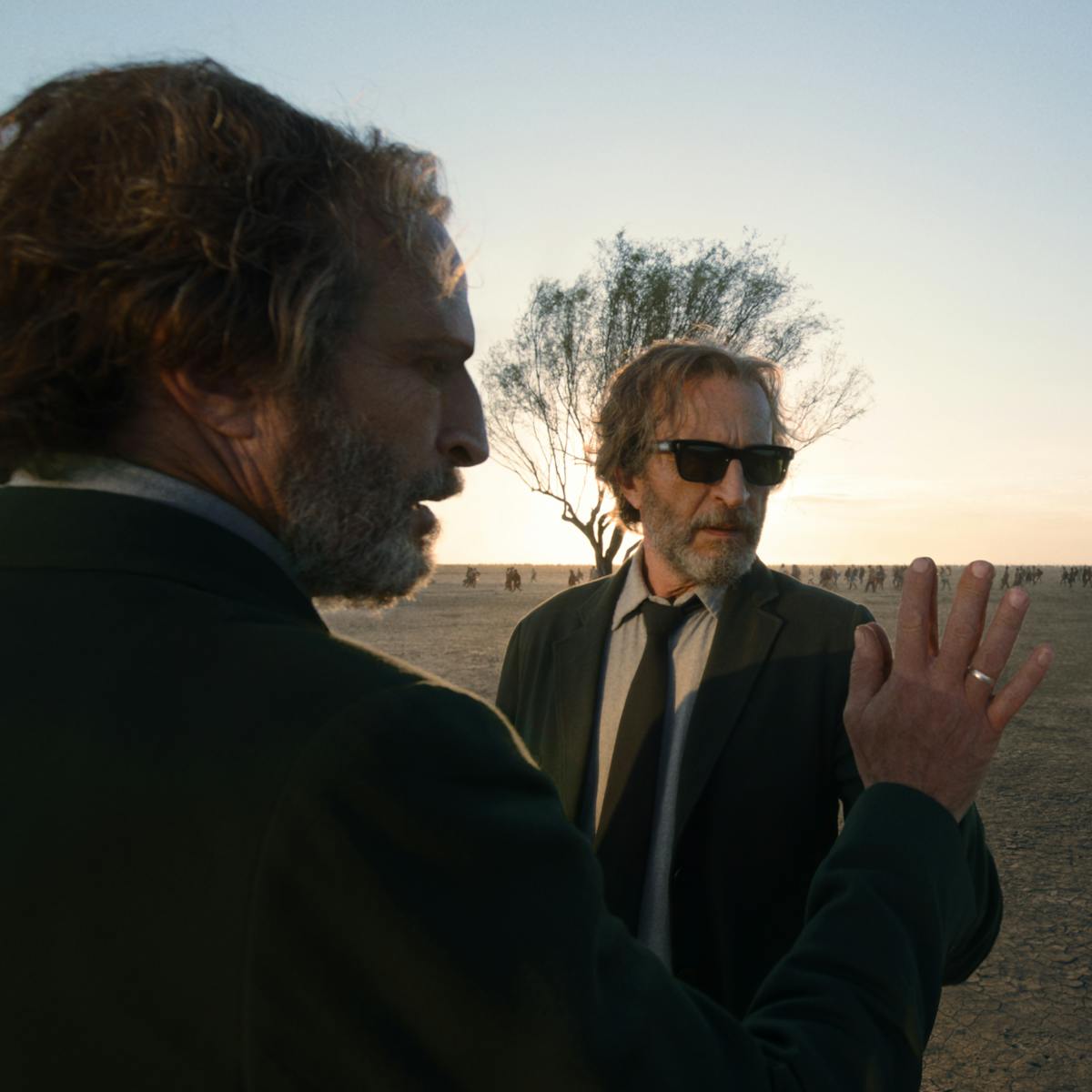The Empress hits refresh on 1850s fashion for a modern audience.
German series The Empress has captivated audiences around the world with the story of the real-life Empress Elisabeth of Austria’s (played by Devrim Lingnau) entrance into Viennese society after meeting and marrying Emperor Franz (Philip Froissant). The story is one that has been told onscreen before, most notably in the Sissi film trilogy of the 1950s, but showrunner Katharina Eyssen brings a modern flair to Elisabeth’s life with The Empress. “The most interesting thing about Elisabeth for me is the duality of her character,” says Eyssen. “Our Elisabeth in The Empress is a creative, untamed, and revolutionary creature who’s entirely out of place in her own time.”
One of the key elements in conveying Elisabeth’s creative, untamed spirit is the costuming. Designer Gabriela Reumer joined the project before they’d cast Elisabeth, or anyone else, for that matter. “I knew from the start that I could rely on the costumes being an important pillar of this series,” says Eyssen. “We wanted to go in a new and exciting direction with them. Costume design is really a visual level of storytelling. With historical pieces especially, the world is best conveyed via the costumes. Gabriela gives everything a twist, bringing the innermost characters to the surface, so to speak.”
Reumer was immediately drawn to Elisabeth’s tale, and to Eyssen’s hope of refreshing the story for a modern-day audience. “Empress Elisabeth was one of the first women in history who attempted to emancipate herself, to free herself from the structures of power,” recalls Reumer. “I think you simply can’t tell enough stories about strong women. And how often, as a costume designer, do you get the chance to design clothes like that?”
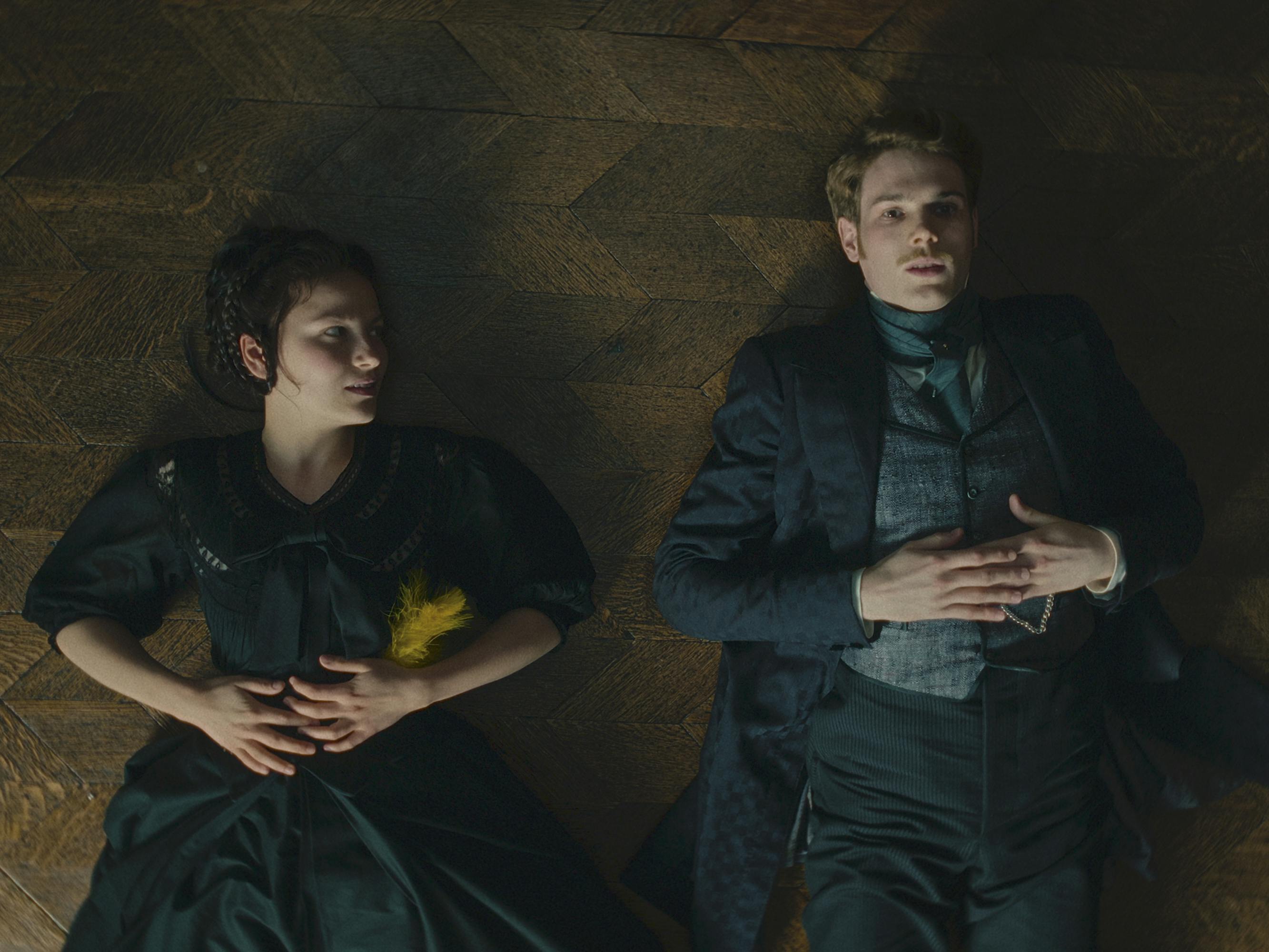
Elisabeth (Devrim Lingnau) and Franz (Philip Froissant)
The costuming for the series was always a priority, as fashion played a significant role in the real Elisabeth’s life. As we see in Episode 1, the failure of a trunk of dresses to be delivered leads to Elisabeth becoming Empress: Though her sister Helene was prepared to wed Emperor Franz, Elisabeth caught Franz’s eye when the fashionable gowns for her family did not arrive, and the sisters were left with only their all-black ensembles to wear to meet the Emperor. The all-black look suited Elisabeth’s features better than Helene’s, and that, along with Elisabeth’s disarming personality, captured Franz’s heart and fate was sealed.
Reumer outfitted Elisabeth in stylish sunglasses and a fish-net top, a modern look that would never be worn in 1850s Hapsburg, but which Reumer makes seem natural for the world in which Elizabeth lives. “For Devrim, I got a pair of gold-colored shoes from Dries Van Noten,” says Reumer. “Cool, modern shoes make a totally different impression to lace-up, pointed boots.”
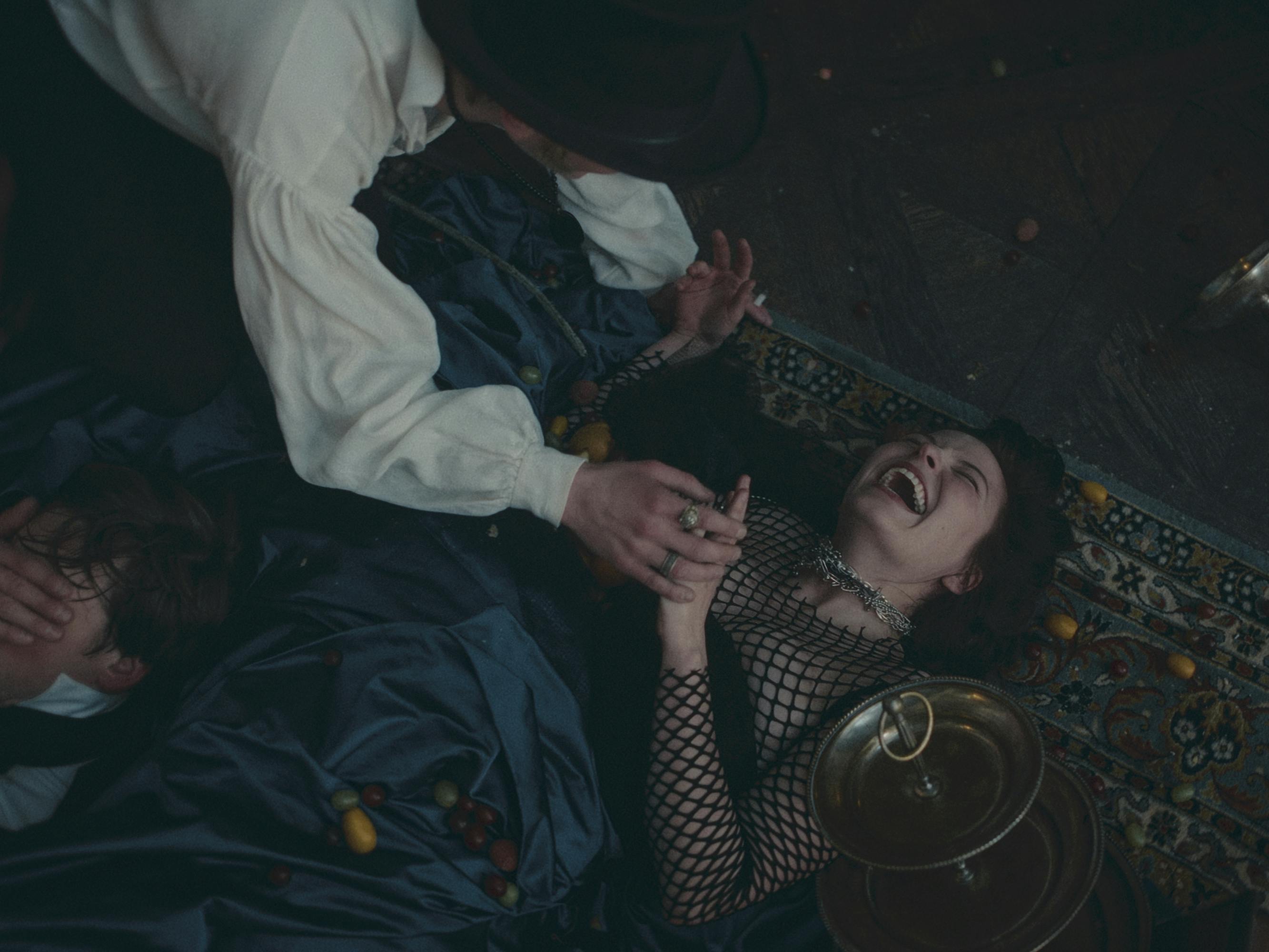
Elisabeth (Devrim Lingnau)
The dress that gained the most attention was Elisabeth’s impressive wedding gown, which was crafted by two seamstresses in Vienna over the course of two weeks. “When I first saw the wedding dress it was just lying there — because something else was being rehearsed at that moment,” director Florian Cossen remembers. “Multiple feet in diameters, hundreds of layers of delicate fabric, pearls and sequins . . . it looked like a living creature lying asleep, or like an art installation. When Devrim put the dress on, it came to life and veritably floated through the marble hallways with her. This dress alone is a reason to watch The Empress!”
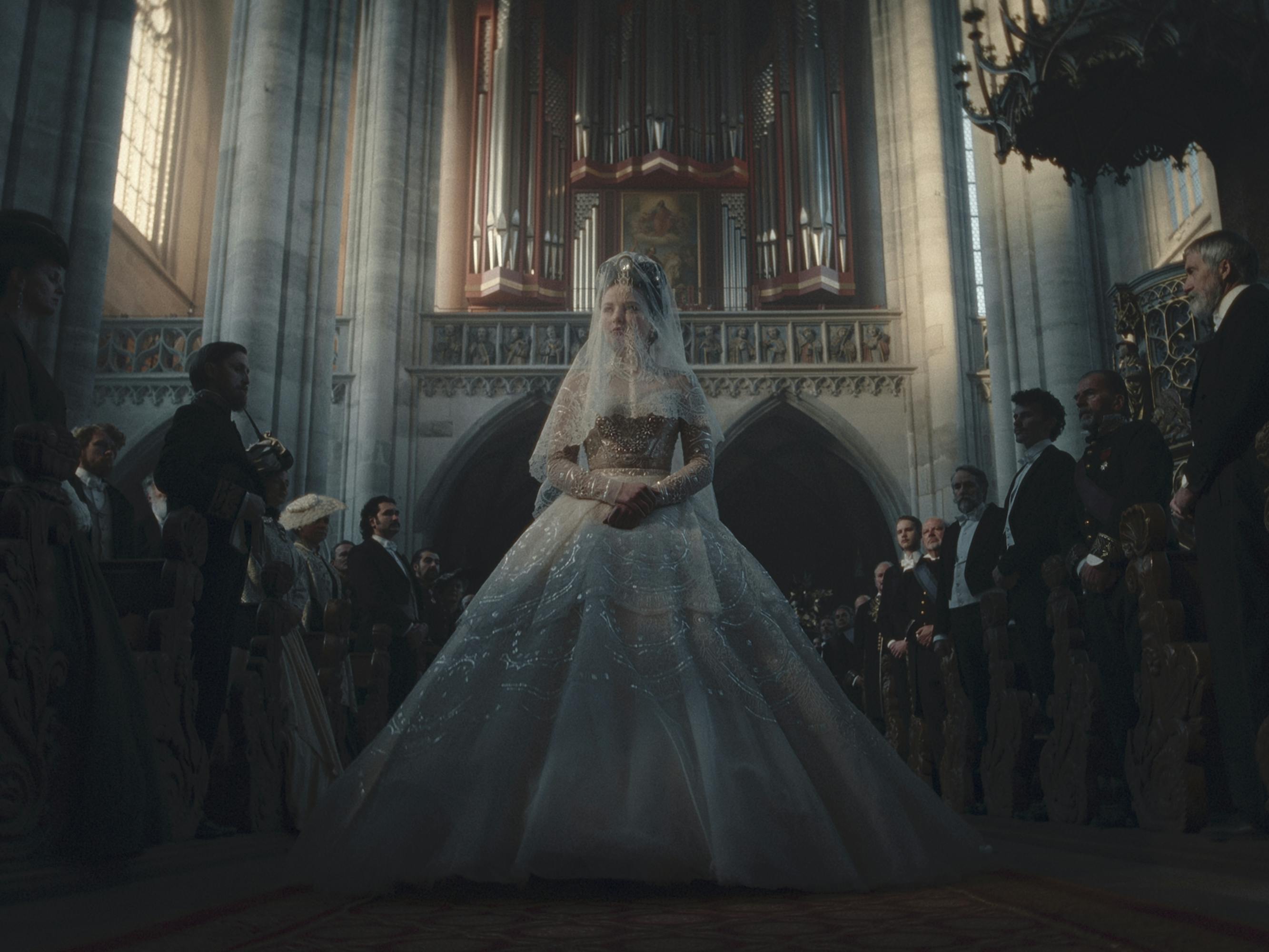
Elisabeth (Devrim Lingnau)
The real Empress Elisabeth was obsessive over her beauty and image, accentuating her waist with extreme corsets and black velvet belts. The Empress calls back to these looks while bringing the modern flair that Eyssen sought. “I first had to really study the fashion of the time and understand it before I found the courage to edit and leave things out,” says Reumer. “Then, I concentrated on the shapes and cuts and let my fantasies go wild.”
The Empress celebrates the revolutionary Elisabeth’s story with a stirring drama and costumes to match. Now begins the wait for Season 2 to bring us more of Elisabeth’s sartorial story!
